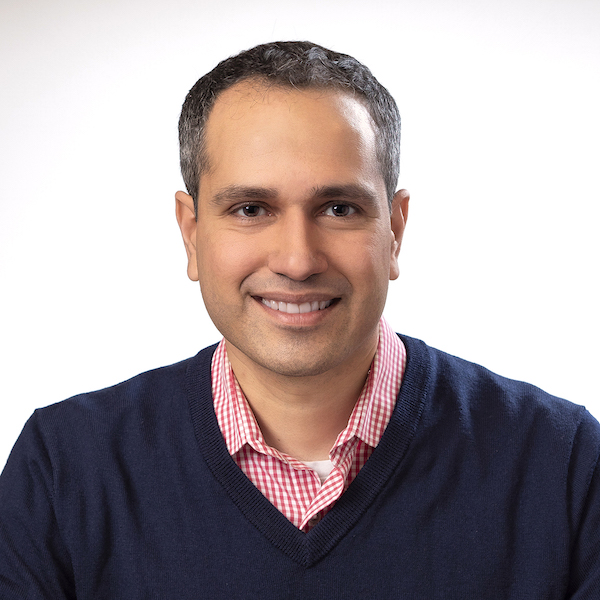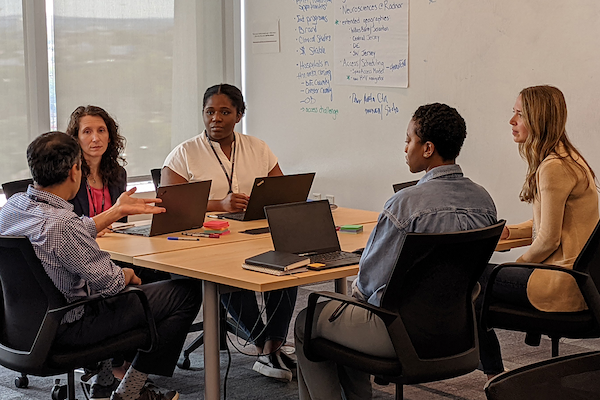Colorectal cancer and the quest to raise rates of lifesaving screenings

Colorectal cancer (CRC) is a big killer: the American Cancer Society estimates that in 2023, more than 52,000 people will die from CRC. Although CRC mortality rates have declined in recent decades, CRC remains the second leading cause of cancer-related deaths nationally.
Regular screenings prevent CRC by catching polyps that can be removed before they become cancerous or by finding earlier stages of cancer that are more treatable, but many adults do not get screened. Shrinking that gap could go a long way in reducing CRC-related illness and death. To that end, a series of research studies led by Shivan Mehta, MD, MBA, MSHP, associate chief innovation officer at Penn Medicine, and managed by Cathy Reitz, MPH, have tested a variety of strategies to increase screening rates.
In this Q&A, Mehta and Reitz discuss CRC screening and their research in this space. Responses have been edited for brevity and clarity.
Why does colon cancer cause so many deaths – is it particularly aggressive?
Mehta: The reason is that it’s actually very common. About one in 20 people will get CRC in their lifetime, and it’s very treatable if you find it at an early stage. That’s one of the main reasons our work focuses on screening and finding early stages of colorectal cancer: If we can find it before it’s spread outside the colon, people do very well. If we don’t, then it’s much more difficult to treat.
Where does your research program fit into that landscape of prevention and treatment?

Mehta: Much of what we do is focused on screening, particularly on identifying average-risk individuals over the age of 45 or 50 and making sure that they get screened through stool testing or colonoscopy. We also have some work on text-message navigation before colonoscopies – which are used not just for screening but also for diagnostic or surveillance purposes when an individual has red flag symptoms or has had polyps removed in the past.
What are some of the barriers to getting screened?
Reitz: I think the biggest barrier is colonoscopy preparation – people have a belief of what that is and how hard or uncomfortable it will be, and they don’t necessarily weigh the long-term benefit of completing the procedure versus the short-term negatives. There’s a term for that: present-time bias. I also think patients may be afraid of finding out whether they have cancer.
The interventions that you test frequently apply ideas from behavioral economics. What led you to incorporate these principles in your research, and what have you learned about what works?
Mehta: CRC screening is a classic design challenge and behavior-change problem – it's something that is universally effective for patients, but still, only two-thirds of this country gets screened. Our effort to increase screening rates relies on making it easy for patients to get screened and removing the burden on busy clinicians who have lots of competing demands. To do this, we've taken behavioral economics principles that have worked in other clinical areas or outside of medicine and tried to apply them.

Shifting from opt-in to opt-out framing has had a pretty dramatic effect. It increased participation by about threefold – from 10 percent to 29 percent – with a mailed stool testing outreach program. Effort reduction, through signing bulk orders, has also worked well, as has removing the need for patients to see a primary care physician before they can get screened with colonoscopy or stool testing.
The area that has had mixed results is financial incentives. We found that a $100 incentive worked for getting health system employees to get a colonoscopy. But some other financial incentives have not worked as well. When we’ve done mailed stool testing outreach, we've tried to leverage lotteries and unconditional or conditional incentives, none of which significantly improved participation.
Reitz: This past spring, we did a randomized trial where some patients received a fancy box that was bright blue and had a catchy phrase, “Screen on Time,” versus just an envelope with a testing kit inside. Everybody was convinced that the box would have a big impact on the completion rate. It turns out it didn’t – the two delivery mechanisms were equally effective. And the financial difference is large when you’re looking at sending thousands of kits, with the substantial cost of the box and additional cost for postage. That was an interesting find.
Mehta: And so that's why we've moved to some of these other areas where we think that just making it really easy for patients and clinicians to complete the desired action is the way to go.
The health system is now rolling out a centralized outreach program to engage with patients about health screenings, and the implementation is informed by your work. Tell me about that.

Mehta: The program is embedded within the primary care service line. It was created to do things that we’ve done in our studies but at scale as part of routine operations. They’ve hired a program manager who is going to be responsible for campaigns promoting screening for CRC and other diseases like breast cancer. They’re using the evidence we’ve gathered about what has worked, as well as the protocols Cathy and the team have developed over time. Each time we do a pragmatic study, we discover a new way to leverage Epic, identify framing and language that leads to action, and refine our approach to data tracking. Cathy and the team have been spending a lot of time with this specialized group to transfer knowledge and collaborate on new initiatives.
Reitz: A good example of this knowledge is that in earlier studies, we would manually screen for eligibility – going through every patient’s chart to see if they met eligibility criteria and confirming that there was nothing that would exclude them. It was a very time-consuming process. It was also, to some degree, subjective, and the people doing it weren’t clinically trained. So, we are working closely with primary care and other stakeholders to automate that process before rolling things out across the service line. It’s been a really interesting process. And anyone who's trying to identify patients on a large scale for any type of outreach can benefit from that work.
The Center for Health Care Innovation has led or supported a broad set of projects aimed at promoting screening adherence. Visit our digital portfolio to learn more.